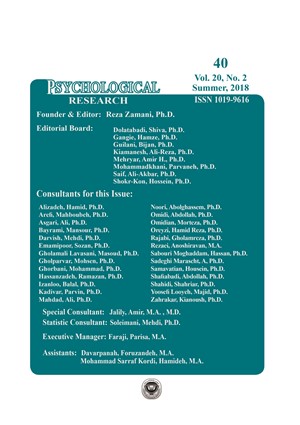-
-
List of Articles
-
Open Access Article
1 - Effectiveness of Forgiveness-Based Group Therapy on Depression and Psychological Distress Symptoms of Elderly Women
parvaneh Mohammadkhani -
Open Access Article
2 - Role of Appetitive Motivation and Sex Differences in Inhibition Response to Food Cues
emad ashrafi -
Open Access Article
3 - Prediction of Schizophrenia Neuropsychological Characteristics Based on Social Cognition Aspects in a Non-Clinical Sample
gholamhossein javanmard -
Open Access Article
4 - Predicting the Tendency to Vandalism in Delinquents on the Basis of Early Maladaptive Schemas and Social/Emotional Maturity
shahin ahmadvand -
Open Access Article
5 - Effects of Ellis Rational Emotive Behavior Therapy on Promotion of Psychological Capital
nila Elmy Manesh -
Open Access Article
6 - Effect of Semantic Relevance and Emotional Valence on Associative Word Recognition
siavash talepasnd
-
The rights to this website are owned by the Raimag Press Management System.
Copyright © 2017-2026







